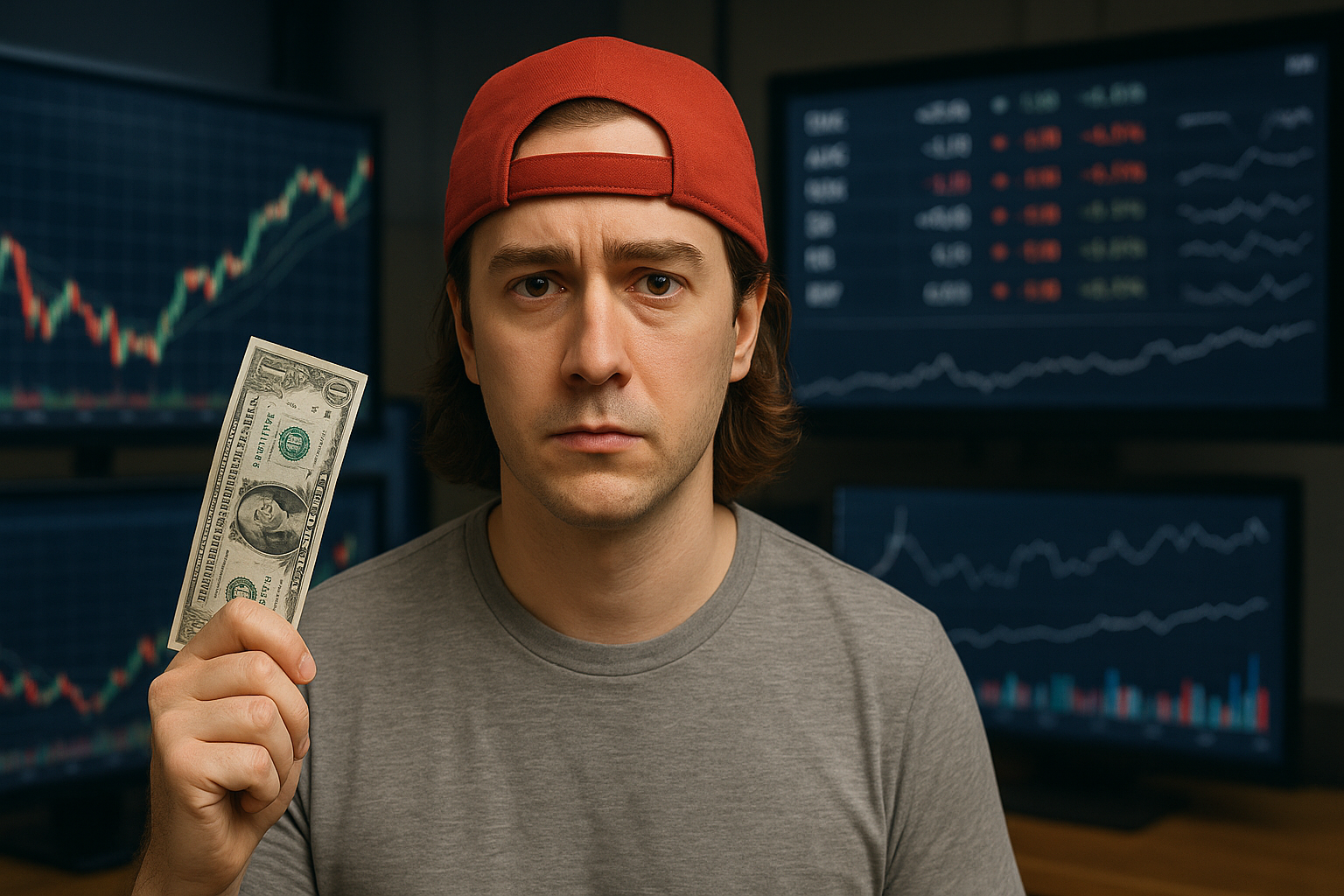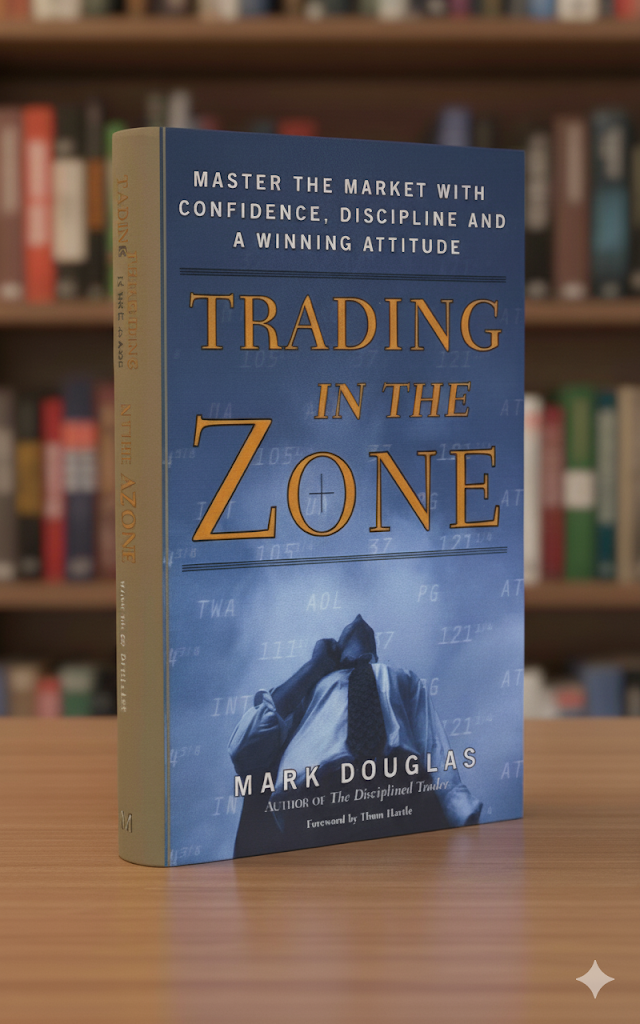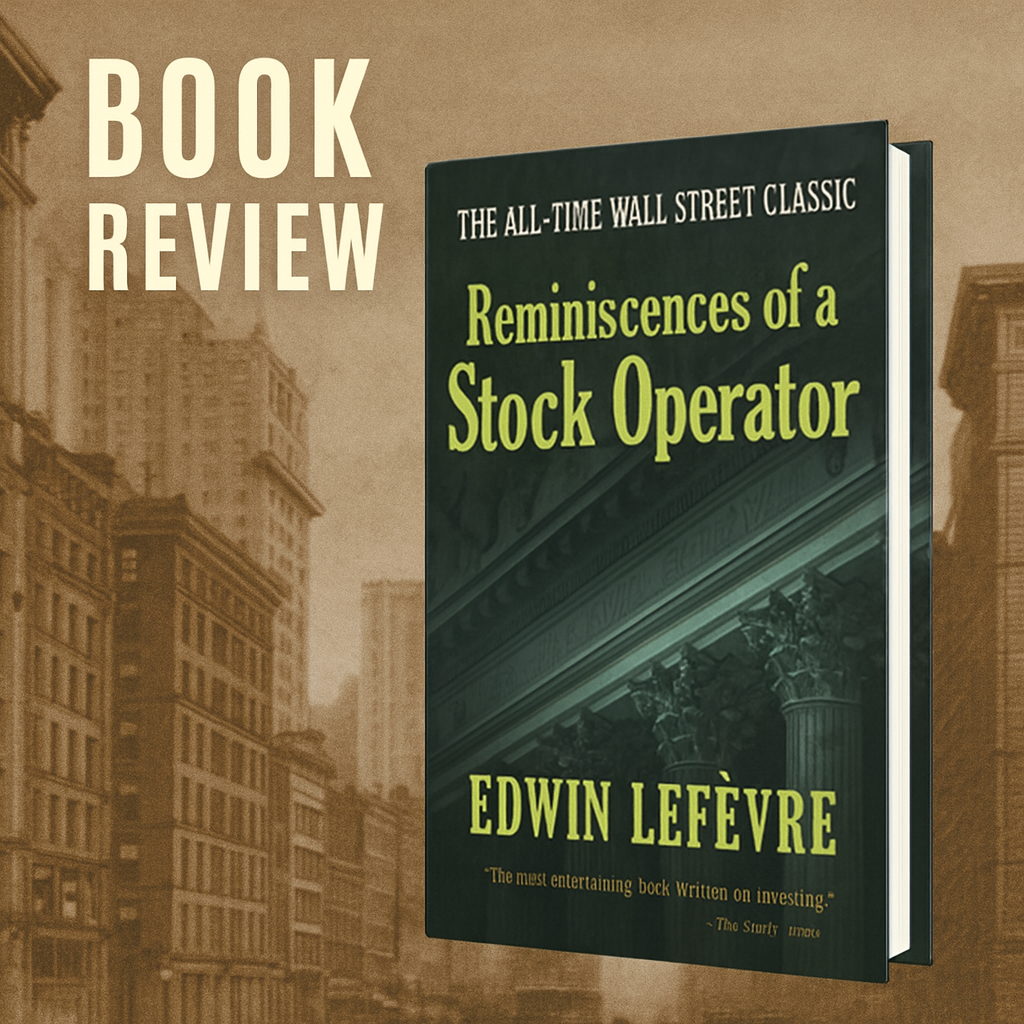The GameStop saga was one of the wildest episodes in recent market history. Craig Gillespie’s film Dumb Money turns that frenzy into a dramatized story of retail traders taking on Wall Street. Here’s what the film gets right, what it glosses over, and what traders can learn from it.
Synopsis
“Dumb Money,” directed by Craig Gillespie, dramatizes the 2020–21 GameStop saga through the eyes of Keith Gill (Paul Dano)—a soft-spoken analyst posting as “Roaring Kitty”—whose conviction in a deeply shorted, brick-and-mortar retailer catalyzes one of the market’s strangest squeezes. The film tracks Gill’s modest life in Massachusetts, his partner Caroline (Shailene Woodley), and a chorus of everyday investors: a nurse (America Ferrera), a GameStop employee (Anthony Ramos), indebted college students, and small-town workers who funnel stimulus checks and savings into a meme stock with missionary zeal.
Across the trade blotter sit hedge-fund titans Gabe Plotkin (Seth Rogen) of Melvin Capital, Ken Griffin (Nick Offerman) of Citadel, and Steve Cohen (Vincent D’Onofrio). As Gill’s thesis spreads on Reddit and YouTube, GameStop rockets, Melvin bleeds, and prime brokers and clearinghouses tighten collateral screws. Robinhood’s co-founder Vlad Tenev (Sebastian Stan) becomes the face of a platform that, at the height of the mania, restricts buying in several “meme” names—an act that ignites allegations of market rigging and summons congressional scrutiny. The movie ends not with a singular victory but with a coda: Gill testifies, hedge funds regroup, retail traders are left with both gains and scars, and the system, though rattled, continues.
Spoiler in service of the lesson: Melvin’s emergency capital infusion and Robinhood’s trading curbs are depicted as the hinge points—moments when risk, liquidity, and plumbing overpower narrative. That is the film’s true subject.
Cinematic Qualities
Gillespie shoots with pace and vinegar: split screens, text overlays of real-time share prices, and a social-media-inflected soundtrack that mirrors the latency-free, dopamine-dense experience of app-based trading. Paul Dano’s performance is restrained and granular; he plays Gill not as a savant or a cult leader but as a meticulous, almost shy optimizer who happens to understand short interest and crowd psychology better than his supposed betters. Rogen brings credible strain to Plotkin—an operator who believes he’s right until liquidity says otherwise. Offerman’s Griffin is flinty, surgical; Stan’s Tenev captures the PR-engineer’s smile slipping under stress. The retail ensemble avoids caricature, and the production design—home offices, ring lights, messy kitchens—keeps the stakes personal. If there’s a fault, it’s the compression of timelines and a breezy gloss over market microstructure; but as a narrative machine, “Dumb Money” is tight, fast, and watchable.
Trader’s Lens
Central Concepts
- Short Interest and Squeeze Dynamics: The film explains—visually, if not mathematically—how a short interest exceeding 100% of float creates tinder for reflexive moves. When price rises, shorts face margin calls, forced covering accelerates demand, and the loop tightens.
- Options and Gamma Exposure: It nods to retail call buying and market makers hedging—fuel for a gamma squeeze—though it stops short of a full walkthrough of dealer positioning and skew.
- Liquidity and Collateral: Most crucially, it foregrounds clearinghouse deposit requirements and broker-dealer collateral pressure. Regardless of “who’s right,” capital and plumbing decide what trades can occur.
- PFOF and Internalization: Payment for order flow is a recurring motif, framed as an incentive misalignment between “free” trading and execution quality.
- Prime Brokerage and Leverage: For Melvin, the relevant variable isn’t simply P&L—it’s VaR, margin, and the speed of prime risk escalations when volatility gaps higher.
Lessons for Traders
- Conviction ≠ Concentration: Gill’s analysis has merit, but the film is honest about concentration risk. Even correct theses can bankrupt you if path dependency turns hostile before you’re proven right.
- Liquidity Is the Only Truth: Prices are opinions until collateral is due. Melvin’s arc is a case study in how overnight deposit calls and intraday VaR shocks can overpower long-term fundamentals.
- Reflexivity and Narrative: Once a trade becomes a story, flows detach from valuations. The lesson isn’t to avoid narrative; it’s to recognize when you’re no longer trading a balance sheet but a social movement.
- Platform Risk: Traders rarely underwrite the operational risk of their broker. The Robinhood halt shows that platform constraints—risk models, credit lines, back-end pipes—can nullify your edge.
- Execution Matters: “Free” is not free. Slippage, fills, queue priority, and internalization are part of your expected value. The film hints at this; professionals should hear it loudly.
- Asymmetric Payoffs Require Discipline: YOLO culture lionizes the home run. The film’s quieter message is about bankroll management—most retail characters are one bad gap away from ruin.
Accuracy vs. Dramatization
- On Point: The portrayal of short squeezes, collateral calls, and the stress inside funds is credible. The script understands that risk managers, not only PMs, set the day’s boundaries in a crisis. The congressional-hearing coda captures the theater that often follows market turmoil—lots of rhetoric, little structural change.
- Simplified: The gamma dynamics are underexplained, as is the chain from NBBO to wholesalers to retail fills. Clearinghouse mechanics—NSCC deposits driven by volatility, concentration, and portfolio risk—are compressed into plot-friendly beats. The film occasionally edges toward implying a tidy top-down conspiracy; reality is both duller and more dangerous: incentive stacks and fragmented oversight create outcomes that look conspiratorial without needing a phone call.
- Exaggerated: Billionaire-as-villain sometimes leans caricature. That’s the genre. But the essential tension—retail community vs. institutional risk regime—is dramatized, not falsified.
Psychology & Culture
“Dumb Money” is sharpest as a cultural autopsy. It catches the peculiar, pandemic-era alchemy: stimulus checks, boredom, zero-commission apps, a hunger for community that coalesced around a ticker. The retail forums function as a collective trading desk—crude, funny, occasionally brilliant—where memes are both morale and market signal. The movie’s retail characters are not fools; they are undercapitalized and overexposed, yes, but animated by a legitimate grievance: a sense that the game is wired for institutions with cheap leverage, privileged data, and superior pipes.
On the institutional side, the film captures the psychology of risk compression. Hedge funds convince themselves they are “fundamental,” but exposure can morph into a crowded trade that is fundamentally a liquidity bet. The back half of the movie is an extended study in loss aversion and narrative denial: PMs defending short theses while risk teams count down to the next margin call. Robinhood’s executives embody a classic principal-agent problem—managing reputational risk while their actual constraint is operational capital at the clearer.
Ethically, the film asks a fair question: Who owes whom what in a market that is “free” to trade but not free to clear? The answer is impolite: everyone owes capital to someone. When that capital is scarce, rules that felt abstract—haircuts, VaR, concentration penalties—become existential.
Audience Fit
- Retail Traders: The primary audience. You’ll recognize the rush of a parabolic chart and the despair of a frozen buy button. The movie is a reminder to audit your broker risk and sizing.
- Finance Students and New Analysts: A brisk, human primer on how market plumbing disciplines theory. Watch it, then read about clearinghouses, dealer hedging, and execution quality.
- Industry Insiders: You’ll pick at the simplifications but appreciate the credible details: the vocabulary of risk, the speed with which ops constraints can dictate strategy.
- General Audiences: It plays as a class-conscious crowd-pleaser with enough character work to make the economics digestible.
What Traders Should Take Away
- Respect the Pipes: You trade inside a system with real friction—clearing, prime brokerage, market-making. In a stress, those frictions define your opportunity set.
- Separate Thesis Risk from Path Risk: Even a correct fundamental view can be invalidated by the path (gap risk, borrow recalls, liquidity spirals). Manage both.
- Crowd Flows Are a Factor: Crowding and positioning drive returns as much as discounted cash flow. Track sentiment and dealer positioning with the same rigor as earnings models.
- Capital Structure of Your Counterparties Matters: Your broker’s balance sheet is part of your own risk budget. Ask the unsexy questions before you need the answers.
Shortcomings That Matter
The film’s biggest omission from a pro’s perspective is a deep dive into microstructure—how options flow, delta hedging, and inventory risk can mechanically force price. It also skirts the messy pluralism of “retail”: alongside true believers were systematic opportunists and professionals riding the wave. And while the Robinhood halt is framed as a dramatic heel turn, the movie doesn’t fully articulate how overnight deposit formulae can spike non-linearly with volatility and concentration, leaving a broker with a binary choice: restrict or risk insolvency. Those nuances would have complicated the story, but they are central to understanding the event.
Cinematic Merits vs. Market Instruction
As cinema, “Dumb Money” entertains without condescending. As market instruction, it is a first pass—a dramatized case study in reflexivity, liquidity, and operational risk. Think of it like a headline that gets you to open the 10-K. For the granular mechanics, you’ll need to read the footnotes; but the film’s emotional truth is accurate: markets are not just price discovery engines; they are infrastructure under stress, governed by rules that rarely trend on TikTok until something breaks.
Verdict / Rating
7/10
Dumb Money succeeds as a cultural snapshot of pandemic-era trading: exuberant, chaotic, and populist. For traders, it is a cautionary tale masquerading as a victory lap. The GameStop squeeze was not a revolution but a speculative episode — a reminder that markets punish undisciplined euphoria as quickly as they reward conviction.
Trader’s takeaway: Hype can move prices, but only discipline preserves capital. Behind every David vs. Goliath rally lurks the timeless lesson: speculation without risk control is just another pump-and-dump.









